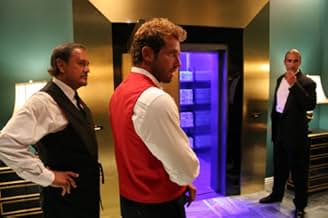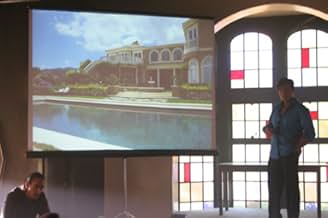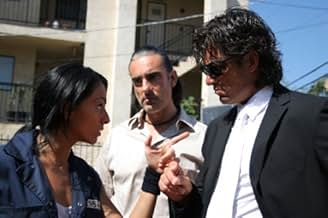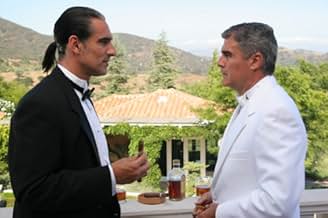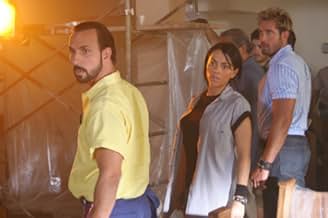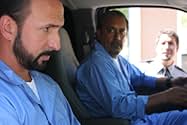I don't believe that I need to recap the plot of this movie since other commentators have done so quite clearly. However I would like to expand on three aspects of the film: the casting, comparable movies, and the technical credits.
I'm an Anglo and came across the movie by accident on Amazon.com. As such I was totally unfamiliar with the cast of this movie, most of whom appear to have extensive credits in Hispanic television series. When an actor delivers a good performance you can credit the actor. When all the actors fit their roles you have to credit the casting. Saul Lisazo, as the putative villain Moctesuma Valdez, was impressive. Both of the gang leaders, Miquel Varoni as Emilio Lopez and Fernando Colunga as Alejandro Toledo, were in character. While the latter was billed first, I assume he's better known for his television work, I would say the former was more of a standout in this film. Ruben Garfias was expressive as car jockey Rafa and Ivonne Montero was very dynamic as his motor-head daughter Rafaela. Gabriel Soto brought some charm to the usually thankless role of caper muscle man. Julie Gonzalo was attractive in the role of the nanny Gloria but Sonya Smith had little to do as Mrs. Valdez (apparently she was more actively involved in a sub-plot which was cut from the movies to reduce run time). Oscar Torres as Miguelito, a would be actor, and Jon Molerio as a security guard provide standout comedy relief. Only the computer "nerd" role of Julio Miranda was surprisingly under written given that it was played by JoJo Henrickson, the author of the screen play. It is relatively seldom that all major roles in a film are well cast. It is a high compliment when I say it makes me want to go out and look at the other work of these performers.
Commentators have compared this film to Ocean's Eleven (1960/2001) or the The Sting (1973) in terms of where it was derived from and the style of the caper. I don't know who made the first caper film, with people coming together to stage a heist, but I know it definitively precedes Ocean's Eleven (1960). Without even pausing I can think of Jules Dassin's Rafifi (1955), Stanley Kubrick's The Killing (1956) or John Huston's The Asphalt Jungle (1950). In terms of style I think we must remember that this film was apparently made on a budget of US$900,000 over twenty days. Its simply not going to have the high-technology caper of a big budget Ocean's Eleven (2001). The complexity of the caper is more like that of 1960's television series Mission Impossible or Man From U.N.C.L.E. However the director and writer of this film wisely choose to concentrate on character and social commentary rather than complexity of the caper. This fits better within both the budget and the concept of invisible immigrants staging a caper. Part of the emotional satisfaction with the ending is the social commentary embedded within it.
Technical credits are normally taken for granted but deserve comment in this case. The camera work is particularly impressive, with use of continuous takes as the camera moves amongst the participants in the scene. This style binds the characters together and creates both realism and a sense of activity. I was also impressed with some of the framing of the shots, with the main characters bookending the background events. I don't think I've ever commented on subtitles in a movie. Inevitably one senses that the subtitles you are reading are a poor reflection of what's said in the original language. In this case the English subtitles, I presume by the screen writer JoJo Henrickson, are fluid and fully convey the emotions on the screen. The catchy soundtrack also adds to the professionalism of the credits.

